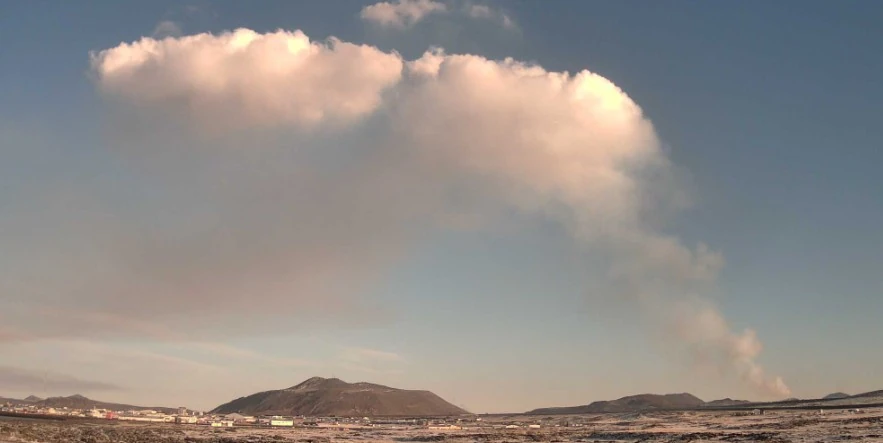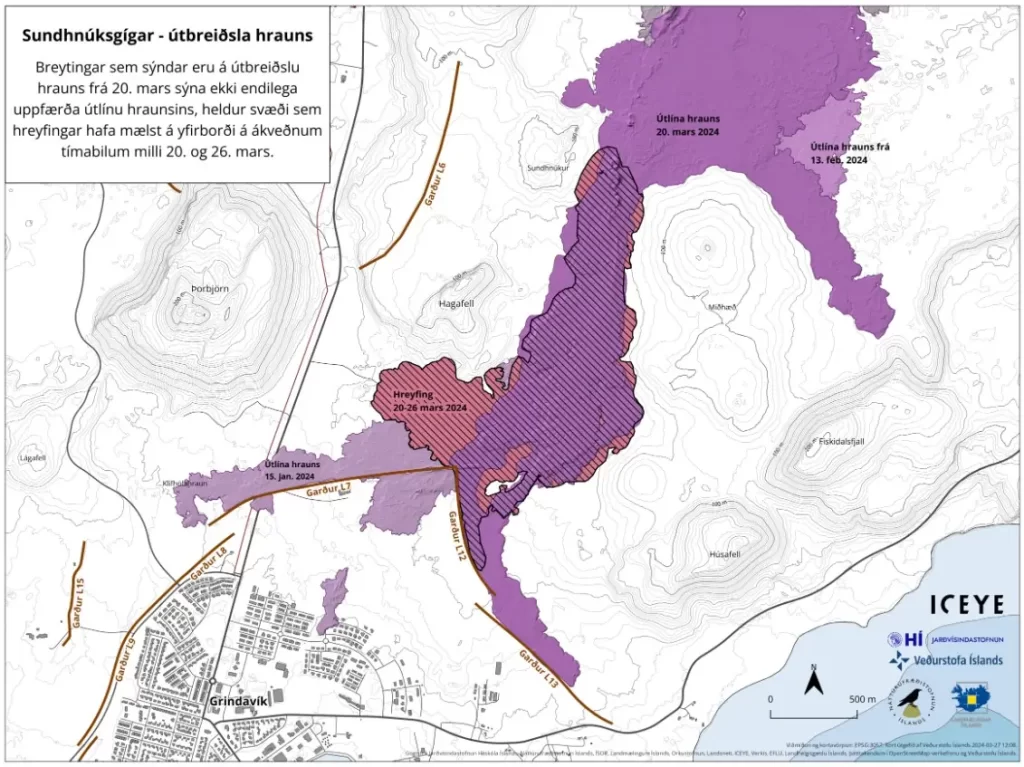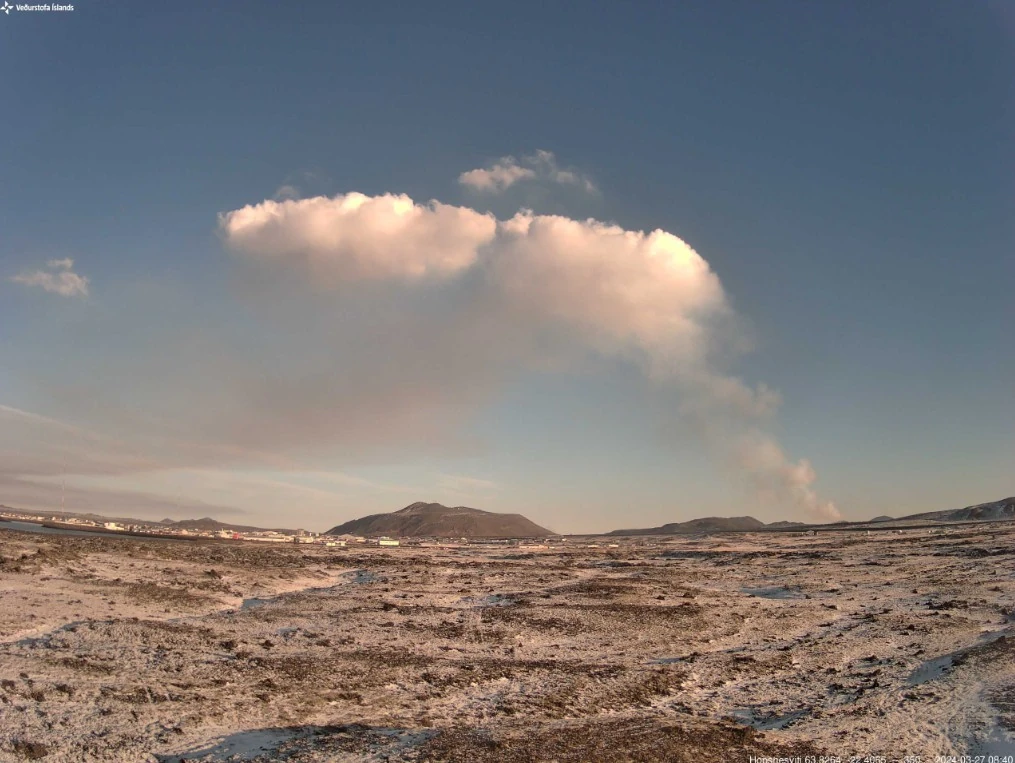High levels of sulfur dioxide emissions in Reykjanes Peninsula, Iceland

The eruption that began in Reykjanes Peninsula on March 16, 2024, continues at stable levels. However, the Icelandic Met Office (IMO) has been detecting very unhealthy levels of sulfur dioxide pollution over the past couple of days. Residents are urged to follow instructions provided by the Environment Agency of Iceland and the Office of the National Medical Examiner.
Eruptive activity and tremors have been quite stable since Monday, March 25, IMO reported on March 27.
Lava continues to flow southward from the craters mostly atop the lava field formed during the first days of the eruption.
The following image shows the lava field as extrapolated from satellite images (ICEYE). The latest acquisition was on March 26 and it shows the widening of the lava field towards the west, south of Hagafell, as well as further lava advancement towards the east and the south of the active vents.

Uplift continues in Svartsengi but at a slower rate than before previous eruptions or dike intrusions in recent months. This suggests that magma is still accumulating beneath Svartsengi despite ongoing eruption. Little to no seismic activity has been detected in the area.
Very high levels of SO2 pollution have been measured over the past few days.
At around 03:00 UTC on March 26, Blue Lagoon station registered levels of SO2 up to 7 000 micrograms/m3. Around 04:00 on March 27, the station in Grindavík (Nesvegur) measured concentrations up to 9 000 micrograms/m3.
Such concentrations are considered unhealthy, IMO said, adding that people are recommended to follow the instructions provided by the Environment Agency of Iceland and the Office of the National Medical Examiner.
Around 12:00 UTC on March 26, the station in Hafnir also showed high concentrations of SO2 — up to about 2 000 micrograms/m3.

“The amount of SO2 released by the eruption and the meteorology in the area are still creating the conditions for severe gas pollution in the peninsula,” IMO said.
People exposed to such levels of SO2 are likely to experience respiratory symptoms. It is important to stay indoors, close windows, and turn off air conditioning. This is especially important where outdoor work is being carried out, as stated by the work safety authorities; companies and institutions in the southwest region of the country must pay close attention to further developments in air quality due to the potential risk of gas pollution.
People in the area are advised to monitor air quality and familiarize themselves with symptoms of air pollution from volcanic gases.
References:
1 Activity of the volcanic eruption remains stable – Continued hazard due to volcanic gas – IMO – March 25 and 27, 2024
Featured image credit: IMO

Commenting rules and guidelines
We value the thoughts and opinions of our readers and welcome healthy discussions on our website. In order to maintain a respectful and positive community, we ask that all commenters follow these rules.